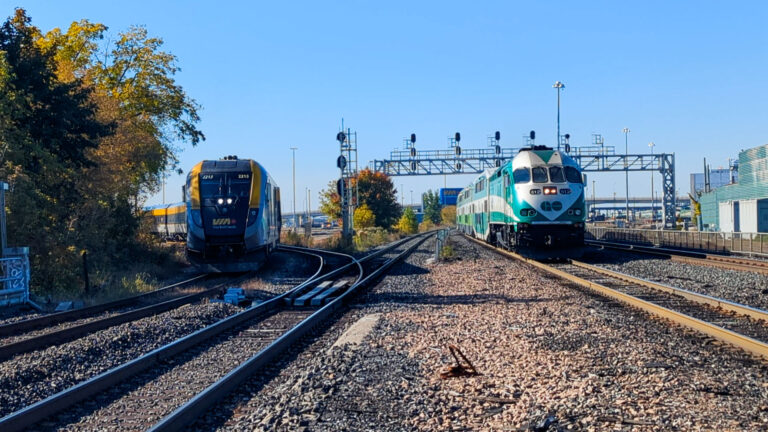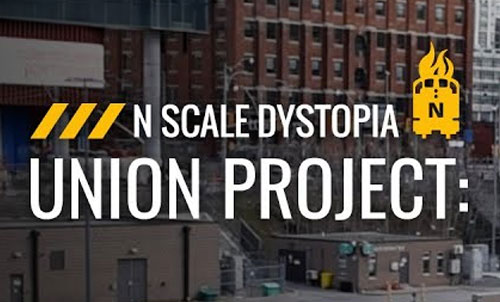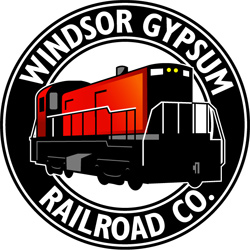 (Originally posted on nscale.net)
(Originally posted on nscale.net)
I’ve been fortunate enough to have spent the past year working on my Niagara Escarpment System – as a small freelanced 2×4 layout set in southwestern Ontario. In this time I’ve learned a great deal building this, my first layout, and now better understand what I’m interested in, what my goals are, and what my next steps should be. I promised myself that I would ‘finish’ the NES, and I’ve done that. The layout isn’t done by many standards, but as a whole, it’s been completely sceniced, runs well, and has sated most of my desires. Now on to (slightly) bigger and better things.
The WGR will be loosely based on the Windsor Hantsport Railway, a 56-mile railway operating in Nova Scotia, Canada between Windsor Junction and New Minas with a spur at Windsor serving two gypsum quarries at Wentworth Creek and Mantua. The WHR’s primary commodities include gypsum, rock, grain, vegetable oil and lumber. The majority of WHR traffic originates at the two gypsum quarries on the spur running east of Windsor, whereby the gypsum is hauled by unit trains to the port at Hantsport. I was smitten with this railway while visiting family in Nova Scotia and as it is a fairly small operation, it lends itself well to my desires.
Over the course of the last few months, I’ve been able to develop a track plan that should lend itself to my current needs, and while by no means a realistic condensation of this prototype, I believe it effectively captures many of the features indicative of the shortline, embodying the essence of the railway as a whole.
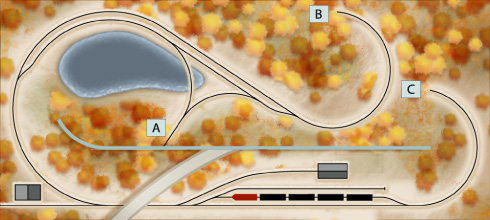
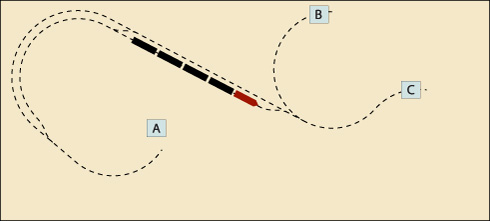
With that, I’ve set out a modest set of goals that I aspire to obtain. Some remedial, others more involved. For the most part, all of these guidelines have been set in an effort to become a better modeller, and to broaden my scope of the hobby.
Benchwork
I have every intention of building 95% of this layout using extruded foam – benchwork included. With the exception of support stringers, my hopes are to demonstrate that an excellent base can be constructed almost entirely of the pink stuff. I like woodworking, I have lots of tools, but I think that some stray away from constructing ‘custom’ baseboards as the woodworking component is too daunting. I think this tends to limit modellers to settle with doors, sheets of plywood or DIY shelving for their base, and I’d be happy to prove that anything is possible with the right materials. (Let’s see if this one comes back to haunt me!)
Track
I’m excited about trying Atlas’ code 55 series, and I’ve already placed my order. The NES used the standard code 80 track common at most hobby shops as well as some Peco switches I had on hand. I’ve been happy with the results of these items, and wouldn’t want to discourage anyone from using them, but I’m now ready to try something finer. As well, my trackside scenery treatments were a little cavalier on the NES – I picked a ballast colour I liked and went with it. However, looking down the lines of all the railway crossings in my local area, I’m starting to appreciate that the modeling track is like anything else and is aided by reference to the real thing.
Scenery
I’m not a rivet counter, but I would like to become more of a ‘daisy counter’. The scenery is the most enjoyable aspect of this hobby for me, and I’d like to improve upon the results of the NES. I’ve spent a good deal of time looking over the work of modellers such as Pelle Soeberg and Josef Brandl, and once of the most striking differences I’ve noted is how they accurately model the things that aren’t trains. Proper elevations on roads, believable lot sizes for residential areas, drainage etc. – details that I considered only as an afterthought. Likewise, I need to teach myself to look at scenery ‘prototypes’ more, be that my backyard, or aerial photos of different railways. I’ve got a good deal of art school training under my belt and one of the first things you learn is that you need to ‘look and see’. I’ve ignored this advice and have been happy to work from memory – a memory that remembers things as a whole, not the details. What colour was the ballast? What shape is a maple tree? A few moments of reference for these and other questions will undoubtedly improve my modelling efforts.
Structures
Scratchbuilding is a wonderful hobby within a hobby, and I’m quite taken by it. Every structure on the WGR will be scratch built – I enjoy the practice and it allows me to enjoy the hobby with but a small toolbox and the kitchen table – a nice reprieve from the basement-dwelling that is too often the life of a modeller.
Motive Power and rolling stock
I am optimistic that this endeavour will allow me to casually learn more about the subject of all layouts – trains! I’m admittedly ignorant with all things on wheels and I think basic investigations about the engines and cars of the WHR will help expand a very narrow knowledge base. I’m not looking to get a degree in engines, but just a better understanding of the history and uses of motive power. Likewise, I’m working up the nerve to scratch build an RS23 – the past engine of choice on the WHR. I’d also like to actually try detailing some equipment, weathering it at the very least!
Overall
I’d like this next project to be a sum of its parts. I’d like to create a pike that is effective overall. If a casual survey of the pike is pleasing then the project has been successful. I dislike sore thumbs, and they catch my eye all the time. I’m striving for unity – a homogeneous relationship between all elements that make up a railroad. If the close inspection finds a flaw, that’s okay – it’s the first impression I’m interested in – besides if I take the time to ensure that the railroad works as a whole, I will be satisfied.
So what of the NES? I still have one little lighting project I’d like to attempt, and then I will wrap the entire thing in plastic and store it safely. I have no intention of cannibalizing the layout, as I want to start new. I also have no intention of trashing the layout as I’ve invested a good deal of time in it and I want to keep it until the next project comes along.
So there we have it, a rather long-winded introduction to the WGR – now that it’s in print and public I have no choice but to stick by my words… Oh, mercy…
